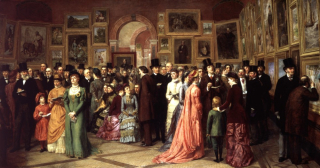
Nassim Nicholas Taleb in Medium:
There is inequality and inequality.
The first is the inequality people tolerate, such as one’s understanding compared to that of people deemed heroes, say Einstein, Michelangelo, or the recluse mathematician Grisha Perelman, in comparison to whom one has no difficulty acknowledging a large surplus. This applies to entrepreneurs, artists, soldiers, heroes, the singer Bob Dylan, Socrates, the current local celebrity chef, some Roman Emperor of good repute, say Marcus Aurelius; in short those for whom one can naturally be a “fan”. You may like to imitate them, you may aspire to be like them; but you don’t resent them.
The second is the inequality people find intolerable because the subject appears to be just a person like you, except that he has been playing the system, and getting himself into rent seeking, acquiring privileges that are not warranted –and although he has something you would not mind having (which may include his Russian girlfriend), he is exactly the type of whom you cannot possibly become a fan. The latter category includes bankers, bureaucrats who get rich, former senators shilling for the evil firm Monsanto, clean-shaven chief executives who wear ties, and talking heads on television making outsized bonuses. You don’t just envy them; you take umbrage at their fame, and the sight of their expensive or even semi-expensive car trigger some feeling of bitterness. They make you feel smaller.
There may be something dissonant in the spectacle of a rich slave.
The author Joan Williams, in an insightful article, explains that the working class is impressed by the rich, as role models. Michèle Lamont, the author of The Dignity of Working Men, whom she cites, did a systematic interview of blue collar Americans and found present a resentment of professionals but, unexpectedly, not of the rich.
It is safe to accept that the American public –actually all public –despise people who make a lot of money on a salary, or, rather, salarymen who make a lot of money. This is indeed generalized to other countries: a few years ago the Swiss, of all people almost voted a law capping salaries of managers . But the same Swiss hold rich entrepreneurs, and people who have derived their celebrity by other means, in some respect.
More here.

